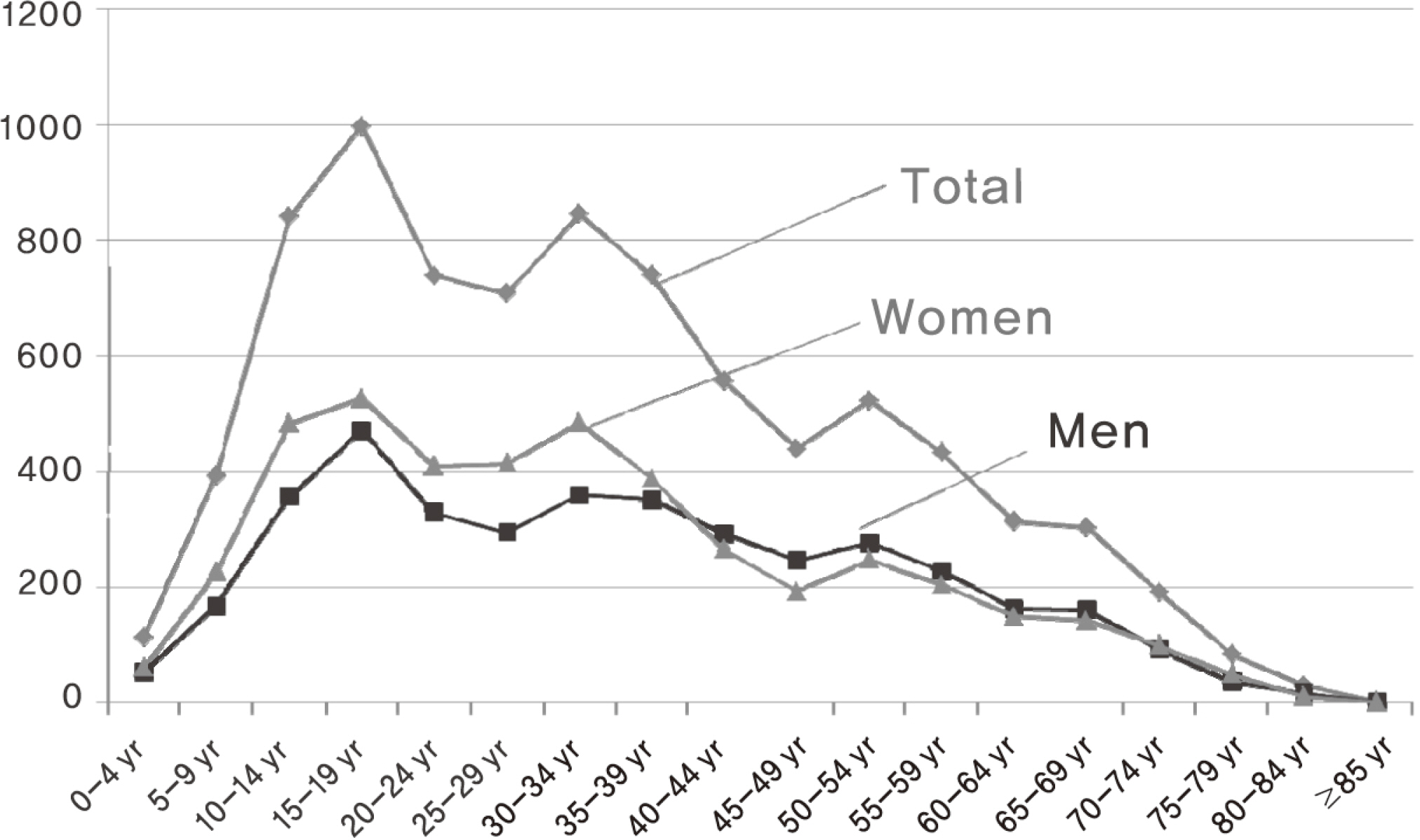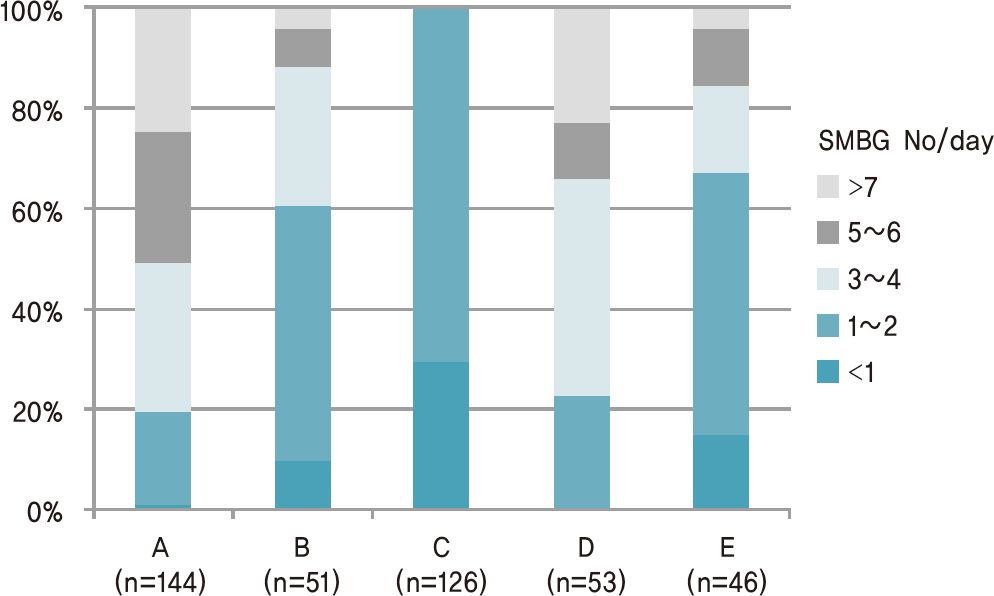J Korean Diabetes.
2014 Mar;15(1):1-6. 10.4093/jkd.2014.15.1.1.
Management of Adults with Type 1 Diabetes: Current Status and Suggestions
- Affiliations
-
- 1Division of Endocrinology and Metabolism, Department of Medicine, Samsung Medical Center, Sungkyunkwan University School of Medicine, Seoul, Korea. jaehyeonkim26@gmail.com
- KMID: 1703374
- DOI: http://doi.org/10.4093/jkd.2014.15.1.1
Abstract
- Because of the low incidence of type 1 diabetes in Korea, some Korean patients with type 1 diabetes are still being treated like type 2 diabetes patients. In 2011, the national health insurance launched a reimbursement program for the use of blood glucose test strips in type 1 diabetes. The initiation of the reimbursement program could provide an opportunity to assess the national status of type 1 diabetes management. In this context, we will discuss the lessons from the studies involving major national type 1 diabetes registries and the results of recent studies on multiple daily injection of insulin, continuous glucose monitoring, continuous subcutaneous insulin infusion, use of sensor-augmented insulin pumps, and the structure education program for patients with type 1 diabetes.
MeSH Terms
Figure
Cited by 2 articles
-
Management of Type 1 Diabetes Mellitus in Adults
Hye Ryoung Yun
J Korean Diabetes. 2020;21(3):156-160. doi: 10.4093/jkd.2020.21.3.156.Frequency of Self-Monitoring of Blood Glucose during the School Day Is Associated with the Optimal Glycemic Control among Korean Adolescents with Type 1 Diabetes
Eun Young Joo, Ji-Eun Lee, Hee Sook Kang, Shin Goo Park, Yong Hee Hong, Young-Lim Shin, Min Sohn
Diabetes Metab J. 2018;42(6):480-487. doi: 10.4093/dmj.2018.0018.
Reference
-
References
1. Shin CH. Epidemiologic characteristics of type 1 diabetes in children aged 14 years or under in Korea, 1985–2000. Korean J Pediatr. 2008; 51:569–75.
Article2. Ko KW, Yang SW, Cho NH. The incidence of IDDM in Seoul from 1985 to 1988. Diabetes Care. 1994; 17:1473–5.
Article3. Rhee BD, Lee HK. Characteristics of diabetes developed under 35 years of age in 1994. J Korean Diabetes Assoc. 1995; 19(Suppl 1):43.4. Rhee BD. Epidemiological characteristics of diabetes mellitus among Korean population. J Korean Diabetes Assoc. 2003; 27:173–8.5. DIAMOND Project Group. Incidence and trends of childhood Type 1 diabetes worldwide 1990–1999. Diabet Med. 2006; 23:857–66.6. Kawasaki E, Matsuura N, Eguchi K. Type 1 diabetes in Japan. Diabetologia. 2006; 49:828–36.
Article7. Cho YM, Kim JT, Ko KS, Koo BK, Yang SW, Park MH, Lee HK, Park KS. Fulminant type 1 diabetes in Korea: high prevalence among patients with adult-onset type 1 diabetes. Diabetologia. 2007; 50:2276–9.
Article8. Hong EG. Anti-GAD antibody in patients with adult-onset diabetes in Korea. Korean Diabetes J. 2009; 33:13–5.
Article9. Knerr I, Wolf J, Reinehr T, Stachow R, Grabert M, Schober E, Rascher W, Holl RW. DPV Scientific Initiative of Germany and Austria. The ‘accelerator hypothesis': relationship between weight, height, body mass index and age at diagnosis in a large cohort of 9,248 German and Austrian children with type 1 diabetes mellitus. Diabetologia. 2005; 48:2501–4.
Article10. Mortensen HB, Hougaard P. Comparison of metabolic control in a cross-sectional study of 2,873 children and adolescents with IDDM from 18 countries. The Hvidøre Study Group on Childhood Diabetes. Diabetes Care. 1997; 20:714–20.11. Beck RW, Tamborlane WV, Bergenstal RM, Miller KM, DuBose SN, Hall CA. T1D Exchange Clinic Network. The T1D Exchange clinic registry. J Clin Endocrinol Metab. 2012; 97:4383–9.
Article12. Miller KM, Beck RW, Bergenstal RM, Goland RS, Haller MJ, McGill JB, Rodriguez H, Simmons JH, Hirsch IB. T1D Exchange Clinic Network. Evidence of a strong association between frequency of self-monitoring of blood glucose and hemoglobin A1c levels in T1D exchange clinic registry participants. Diabetes Care. 2013; 36:2009–14.
Article
- Full Text Links
- Actions
-
Cited
- CITED
-
- Close
- Share
- Similar articles
-
- Management of Type 1 Diabetes Mellitus in Adults
- Management of Early-Onset Type 2 Diabetes
- Management of Type 2 Diabetes Mellitus in Adolescents and Young Adults
- Responses: The Current Status of Type 2 Diabetes Management at a University Hospital (Korean Diabetes J 33(3):241-250, 2009)
- Letter: The Current Status of Type 2 Diabetes Management at a University Hospital (Korean Diabetes J 33(3):241-250, 2009)





